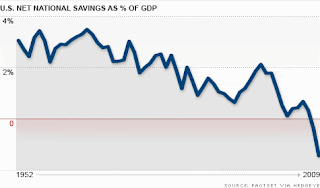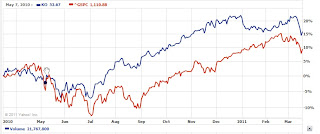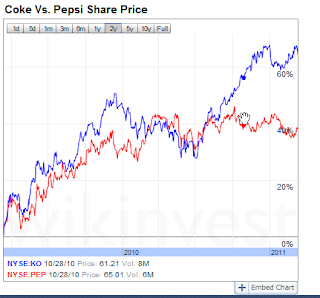By Royce Leon
After asking many people around if they have ever invested in their lifetime, many opinions have been that they are either scared of investing because they would lose their money or because they had no clue as to why they would ever invest. Here is a little food for thought, as of the current year, the savings rate for the nation is 1-3%.This means that only 1-3% of the nation has either saved enough money to retire or has a cushion to cover for their expenses. Each year that passes by, it has been harder and harder to get a job and to make money, but also to retire with social security because of both our government spending and because the amount of baby boomers that are beginning to retire. It is a well thought now that Social Security will be non-existent by the time that our generation is going to retire. That is why the time to invest is now, so that we can live comfortably in the future. Another reason to invest is that as you start to notice prices for food, gas and other items are increasing year by year, that is called inflation. Basically, if you had just put money in a savings account, underneath your bed, or a checking account, your money will buy a lot less and less with the years coming by.

There is no limit as to the amount of money that you invest because how comfortably you want to live in the future is how much you should try to invest. Basically, if you have time on your side, lets say 40 to 50 year time frame then the better chances are that the money that you invest in will cover your expenses at the time that you will retire and stop working. Now the longer you wait to invest, the more money you have to invest just to get to the same point to a person that started saving and investing at an earlier age. In magazines such as Kiplingers and other resources, a person at the age of 25 years old with no savings or money invested, should start investing $200- $300 per month with the right investments should give them about 1 million dollars to retire with. If you are working, then you should be saving about 10% of your net salary, for example if you make $3000 per month, then you should be investing or saving about $3600 per year or $300 per month. Now I know that being in school, I notice that some people may either work part time jobs or don't work at all, but they do spend on Starbucks or going out with friends, can save as little at $50 per month and that would be better than nothing. It would be a scary thought if you worked all your life, but the day that you cannot work and you don't have that savings to cover medical bills or just living expenses in general.

Now there are so many ways for students and low income people to invest. Here are different ways to invest with little or no money to open an account:
- You can open a DRIP (Direct Reinvestment Plan)
- You can invest in a financial companies such as Vanguard, Fidelity, Charles Schwab with mutual funds
- Open a brokerage and start buying individual stocks or Exchange Traded Funds (This option requires $500-$1000 to open an account)
- Your bank has options for you to invest in their mutual funds
Some Mutual Funds
The money required to open an account is the most money you would ever need to give out at one time. The money used to open the account will go towards the purchase of the stock. For example, if I open a DRIP account for $250, then that $250 will buy me shares of that stock and from there I can make however big or small investment at a time.
Mostly every company that is registered in the United States has DRIPS that you can invest in with little or no money at all, Google the company name with the word DRIP right after. Mutual Funds tend to ask for $500 to $1000 to open the account, but some don't ask for any money up front, but you need to commit to investing $50 per month. The next option of brokerages often just ask for the $500 deposit and that money just sits in your brokerage account until you begin to buy stocks.
Mutual Funds or Stocks?
Not a lot of people are terrified to invest because they don't know what to invest in without getting hammered or basically losing all their money. That is why you invest in a mutual fund because you are pooling with millions of other people and because there is a fund manager that is managing your account. Of course you have to pay his salary, so there are annual fees that the companies withdraw annually from your account to pay him. When you have a mutual fund, you have no control as to what happens in the fund and its performance is based on the manager that is managing your money.
Now if you actually want to take the risk and decide to go at it on your own by opening a brokerage account, then the only expense is to make the order to buy the stock. Before you buy the stock, you would have to do some homework for each stock that you want to invest because you don't want to be losing money because of bad investments. Homework meaning getting the fundamentals of the company and seeing if they are a profitable company (Look at the financial statements). Most of the time, don't listen to people and buy the stock because they said that stock would make you money. Now, you could take them into consideration and read up on it, but don't buy the stock because they told you of a hot stock that you
should buy.
Remember that time is on our side when we are young, but as we get older, time is not on our side. Students and others just like me should invest at a younger age because as we get older, the more responsibilities we will have and the less money that we can use to invest and have a comfortable retirement.
Leave a comment or if you have any questions about investing.
References:
http://www.kiplinger.com/magazine/archives/2008/02/seven-figure-saving-strategy-for-your-twenties.html?si=1
http://money.cnn.com/2010/06/30/news/economy/personal_savings_decline.fortune/index.htm









